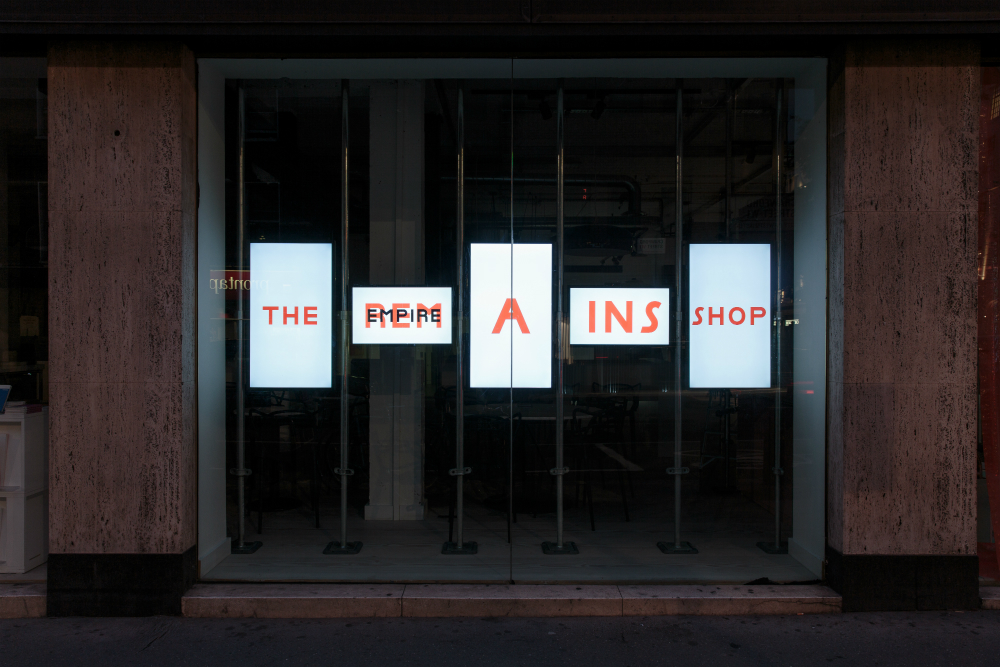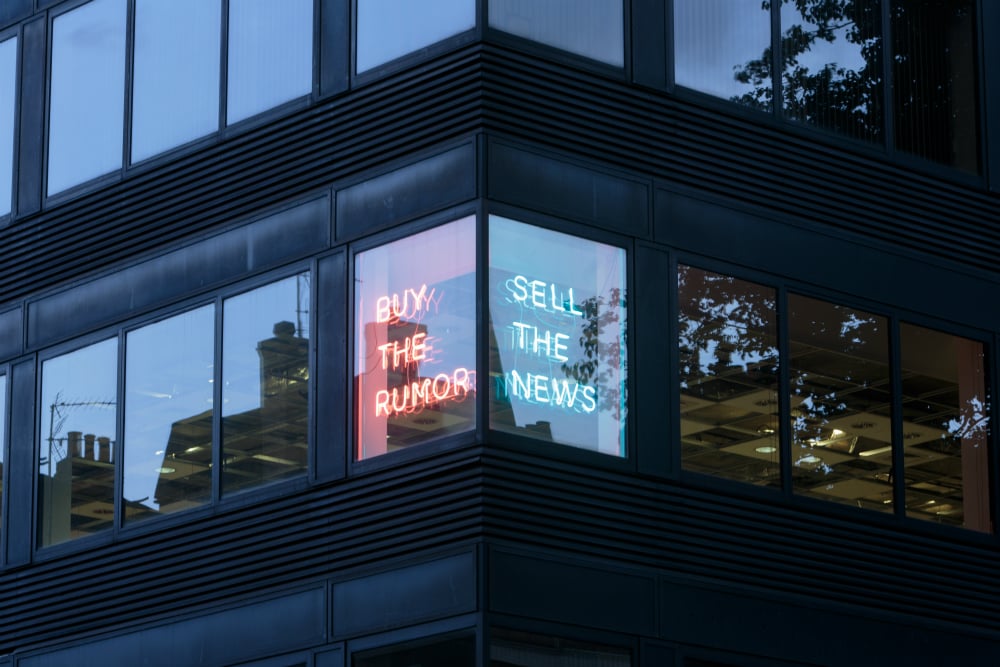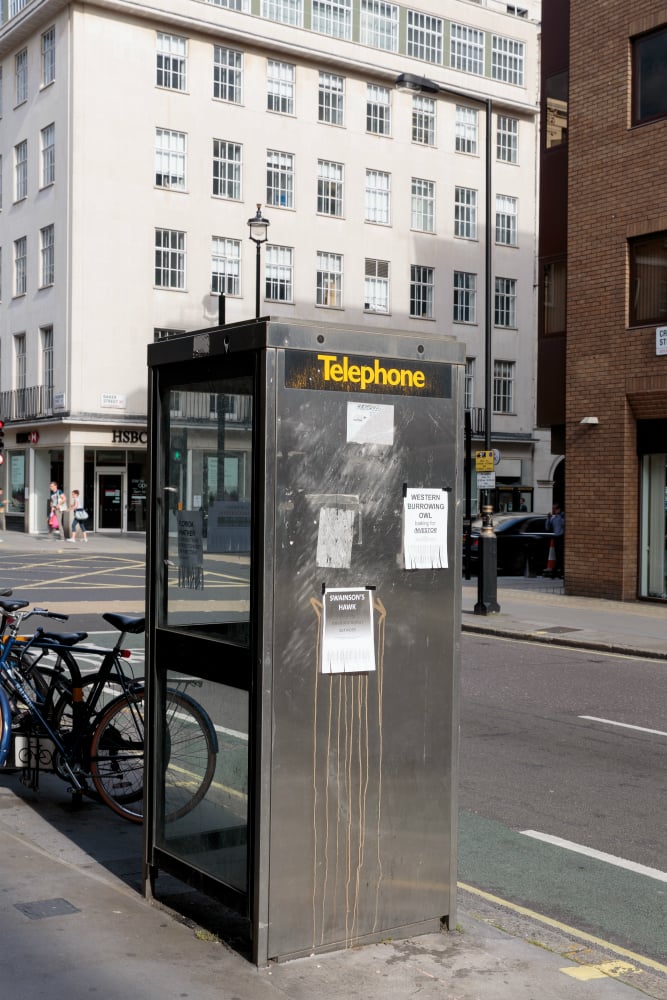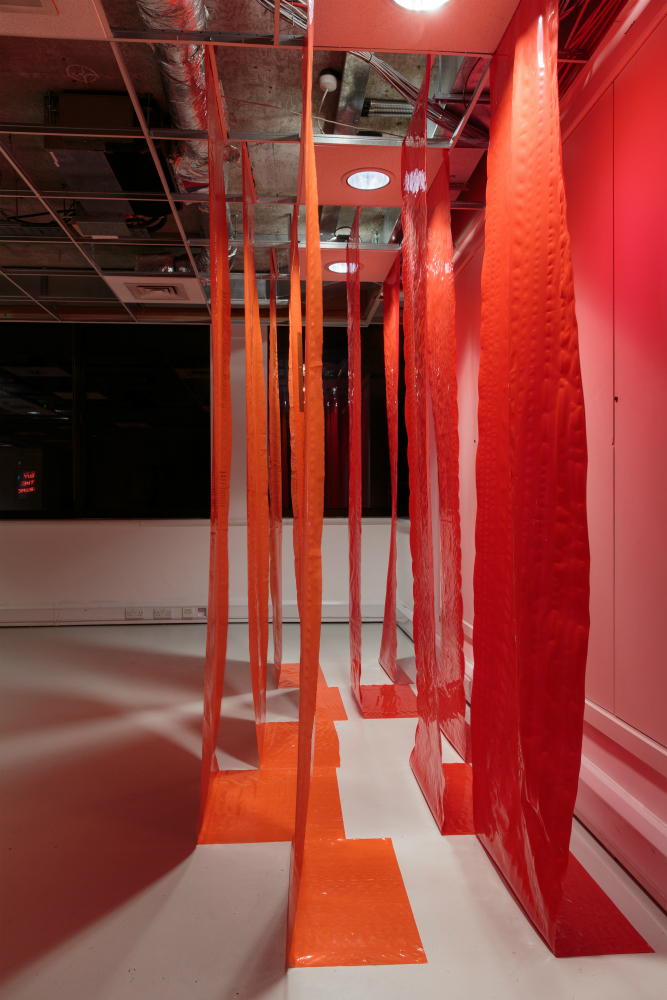
Looking at The Circle Game by Elmer Borlongan at the Pinto Art Museum in Antipolo, Philippines. Photo © Ellen Oredsson
Looking at art can be wonderful, but it can also be difficult. I
didn’t learn how to interpret art during my childhood in the same way
that I learned to interpret books or movies. This meant that even if I
enjoyed looking at art, sometimes it felt like
looking without really
seeing or
understanding – a
feeling many others share. To make the process easier, I’ve written
some guidelines for how to look at an artwork that you’re interested in.
Before I continue, let me just say that there’s no right or wrong way
of looking at art. This article is not intended to dictate your
experience of looking at art or moving through museums/galleries. The
great thing about art is that any experience that we have with it is
legitimate and worthwhile.
However, I’ve heard from many people that they “don’t know what
they’re doing” when they look at art. It’s often assumed that you need
some sort of education to be able to properly analyse an artwork. This
can sometimes make museum or gallery visits feel like meaningless or
alienating experiences.
The following guidelines are therefore meant to provide a systematic
approach to looking an artwork. They can be followed as much or as
little as you yourself would like. Personally, I only follow these
guidelines when I have the energy, and/or when I’m really interested in
an artwork. (Because going to a museum and analyzing every single
artwork on display would be completely exhausting.)

Looking at Jag ska sluta älska dig (I will stop loving you) (2010) by Malin Holmberg at Wanås Sculpture Park, Sweden. Photo © Ellen Oredsson
Guiding Questions
When looking at any artwork that you want to spend some time with, it
can be useful to try and answer one or all of the following questions:
- What does the artwork mean?
- What did the artwork mean to the artist?
- What does the artwork mean to other people?
- What does the artwork mean to me?
These answers can be answered gradually, and may never stop being
answered. But they offer some useful guidelines for what you’re trying
to gain by looking at the artwork.
So how do you go about answering these questions when you encounter an artwork? Let’s go step by step.

Looking at paintings in the Art Gallery of NSW, Sydney. Photo © Lotta Olsson
First Impressions
- Look at the artwork. This “looking” can take many
forms: we can see it it face to face in a museum or gallery, or we can
be looking at it on our computers or mobile phones. If you’re visually
impaired, you can be experiencing it through the use of verbal/written
description, or through touch. Note your first impressions and the
feelings that come over you when you first look at the artwork.
- What is the subject matter of the artwork? This means literally asking: what am I looking at here? Can you easily identify the subject matter or are you unsure?
- Try to identify the following physical attributes of the artwork, and what effect they have on you as a viewer:
- What are the artwork’s colours, as you perceive them? If it’s a video/performance piece, what is its colour palette?
- Size?
- Material?
- Texture?
- How is the subject matter depicted?
- How is the artwork displayed? Whether it’s in a museum, gallery, website, home, park, etc.
- Try to make an initial analysis. This doesn’t have
to be complicated – it’s about looking at the different parts of the
artwork and seeing what those parts mean together. Again, it can be
useful to answer the above questions: What do you think the artwork
means? What do you think it meant to the artist? What do you think it
means to other people? What do you think it means to you?

Looking at a 2015 painting by Jarasporn Chumsri at the Bangkok University Gallery, Thailand. Photo © Ellen Oredsson
Applying Context
After noting the visual attributes of the artwork and the effects
that they have, apply information about the artwork’s historical and
social context.
- Apply your own knowledge. You don’t have to be an
expert to do this. Ask yourself, for example, if you’ve seen an artwork
with a similar style before. If so, how does this one compare? Do you
recognize the artist, and, if so, what do you know about the artist? Do
you know anything about the time period or geographical location of the
artwork? Perhaps you even know things about the artwork itself, perhaps
you’ve heard about it before?
- Look at the information provided by the museum/gallery/other place where it’s being displayed.
This is usually in the form of artwork labels or exhibition catalogues.
Is there no information? Don’t be afraid to ask! Let them know that
you’d appreciate more information about a certain object, and see if
they have any information on hand.
- Do further research. You can use books, websites,
articles and other people’s knowledge/opinions. This is the part of the
process that really never ends. Art historians will always keep on
researching and changing their opinions, revising their analyses and
finding new meanings for artworks as new information comes to light.
- After applying context, try doing an analysis again.
Answer the same questions as before, but this time, see how your
answers have changed. Does awareness of things like historical context,
the artist’s intent, or other people’s interpretations change how you
feel about it?
Let’s try it together!
Let’s go through an example of this process right now.

Bringing Home the Body of Karl XII (1878), Gustaf Cederström. Oil painting.
The example artwork:
Bringing Home the Body of Karl XII (1878) by Swedish artist Gustaf Cederström. I saw it at Göteborgs Konstmuseum in Göteborg, Sweden.
Example: First Impressions
- Look at the artwork. Note your first impressions and the feelings that come over you when you look at it.
When I first looked at this painting, I was struck by its size, but
also felt that it was too sentimental, perhaps slightly uninteresting.
- What is the subject matter of the artwork? Can you easily identify the subject matter or are you unsure?
The artwork depicts some sort of funeral procession or the carrying
of a dead body. I suspected, when I first saw it, that the dead person
being carried was a Swedish king, but I was unsure. I didn’t know when
or where he had been killed, or what the significance of his death was. I
saw the people standing to the side of the painting and guessed that
their inclusion was meant to encourage the viewer to mirror their
respectful and saddened attitude.
- Try to identify the following physical attributes of the artwork, and what effect they have on you as a viewer:
a) What are the artwork’s colours?
The colour palette is cold. Greys and blues dominate the painting.
This reflects and emphasizes both the cold weather and feelings of
sadness and mourning.
b) Size?
The painting is very large, which makes it feel important. I already
know that the bigger a painting is, the more public it’s supposed to be,
so this is a painting meant for a large, public audience.
c) Material?
It’s an oil painting, a typical material for large Western paintings from the 19
th century.
d)Texture?
The brush strokes are not visible and do not draw attention to
themselves. The artist wants us to focus on the scene at hand rather
than on any stylistic flourishes or the painting’s material.
e) How is the subject matter depicted?
The subject matter is depicted in a realistic but theatrical manner.
The scene is laid out in a way that is very staged, and the gestures of
various people in the artwork tell us a story – from the bowed head of
the man to the left, to the noble stature and forward movement of the
man in the front of the crowd, to the perfectly resting face and body of
the man on the stretcher.
f) How is the museum, gallery, website or other institution displaying the artwork?
The painting is displayed in a room filled with other paintings from
the same time period; however, its size and prominence on a wall makes
sure that it dominates the room. It gives a good idea of how the
painting might originally have been displayed.
- Try to make an initial analysis. What do you think the artwork
means? What do you think it meant to the artist? What do you think it
means to other people? What do you think it means to you?
I think the artwork is depicting the death of an important figure in
Swedish history. The painting’s size and composition makes me think that
it’s depicting an event that is meant to feel important to the viewer.
The colours, subject matter and the way the scene is laid out makes me
think that I’m supposed to feel mournful and maybe even inspired.
I think that, to general audiences, it has been a celebrated painting
due to its presumably patriotic subject matter, size, and technique. To
me, however, it isn’t as important as it’s supposed to be, as I have no
emotional connection to the event in question and don’t particularly
like the patriotic idealization of kings and wars.

Looking at Bringing Home the Body of Karl XII (1878) by Gustaf Cederström at Göteborgs Konstmuseum, Sweden. Photo © Ellen Oredsson
Example: Applying Context
- Apply your own knowledge.
I can see, using my own knowledge, that this is a history painting. A
history painting is a genre that depicts an important event in history.
I know this because it follows the familiar pattern of history
paintings: the size is large, and it’s laid out in a theatrical manner
that hints at a story or narrative. The gestures and movements of the
figures – including the capes and flags flying in the wind – are
dramatic and emotional. It even uses a “pyramid composition”, in which
the components of the painting are organized in a triangle shape. This
is a composition often used in history paintings, as it communicates a
sense of balance and stability and is easy for the eye to follow.
Since I know it’s a history painting, I know that it’s depicting an
important event in history. I can also tell that it’s made in the 19
th
century – a period that I know is marked by an increased sense of
nationalism in art. This leads me to believe that it’s supposed to
inspire a sense of nationalism in me, as a Swedish viewer, by
communicating the importance of this particular event from Swedish
history.
- Look at the information provided by the museum/gallery. This is usually in the form of artwork labels or exhibition catalogues.
By looking at the label and the information that the museum gives me,
I can find out that the king in the painting is in fact Karl XII, and
that it depicts the transport of his body back to Sweden after a battle
in Halden, Norway in 1718. I also find out that the painting was made in
1877 – 78. This confirms that the painted event was not recent but
rather a historical one.
- Do further research.
Doing some further research tells me even more about the context of
the painting. For example, I’ve found out that the scene in the painting
was
completely staged
and did not in fact occur in real life. This is common in history
paintings, which are, as I previously mentioned, theatrically staged in
order to achieve a certain emotional effect.
Another interesting tidbit is that the painting was bought by
Konstantin Konstantinovitj in St. Petersburg, Russia when it was first
completed. This
caused an uproar
in Sweden. This confirms my suspicions that it was an important and
celebrated painting when it was first made. A collection was started to
get Cederström, the artist, to create a copy. The one in front of me in
Göteborgs Konstmuseum, however, is the original, having ended up there
after the Russian revolution in 1917.
- After applying whatever contextual knowledge you already have or find out, try doing an analysis again.
I stick by my original analysis – that the painting was supposed to
be an important, national artwork that uses the death of one of Sweden’s
kings to inspire national pride. The scene is fabricated and composed
to achieve a particular emotional effect. As a history painting in the
second half of the 19
th century, it was slightly
old-fashioned but also fits into the impulse during this era to foster
patriotic sentiment through art.
For me, the painting doesn’t mean the same thing that the artist
intended. The painting is worthwhile to me, however, in teaching me more
about Sweden’s history. Not just Sweden’s history of kings and wars,
but Sweden’s history of art and nationalism – topics that remain
relevant today.
Give it a try!
I’d love to hear about your own experiences with looking at art, and
how your experiences compare to mine. Below are three examples that you
can practice on right now. Give them a try, and feel free to share your
results in the comments!

American Gothic, Washington, D.C.
(1942), Gordon Parks. Gelatin silver print. Library of Congress Prints
and Photographs Division, Farm Security Administration – Office of War
Information Photograph Collection.
american gothic, washington, d.c. (1942), Gordon parks
Gordon Parks was an African-American photographer and filmmaker,
famous
both for his films and for his photojournalism. His work often dealt
with issues of race and civil rights. This is a portrait of Ella Watson,
a government cleaning woman.
For context, read
this article about the staging of the photograph and its social context.

Yŏn’ga Buddha (c. 539), unknown artist. 16.3 cm high. Cast in Nangnang (present-day Pyongyang). National Museum of Korea.
Yŏn’ga Buddha (c. 539), Unknown artist. Cast in Nangnang (present-day Pyongyang)
This is one of the oldest surviving Korean Buddhas ever discovered.
This is the only one of a thousand commissioned sculptures to have
survived. It therefore gives scholars an idea of what 6th century Korean
Buddhist imagery looked like.
For context, read the
museum information about the statue and
this article about Korean Buddhist sculpture.

With all my love for the tulips, I pray forever
(2012), Yayoi Kusama. Installation at the National Museum of Art,
Osaka, Japan. Consists of oversized white plastic tulips in a white room
filled with red polkadots. Photo © Samuel Mark Thompson.
WITH ALL MY LOVE FOR THE TULIPS, I PRAY FOREVER (2012), YAYOI KUSAMA
Yayoi Kusama is a Japanese artist who has been active since the
1970s. Today, she is considered one of the most important artists within
(or having acted as a precursor to) movements such as pop art, feminist
art and installation art.
For context, read
this article about Kusama’s work, and
this one about someone’s impression of the artwork.



















Jenna
I also find it’s helpful to consider whether or not the artist is trying to represent a moment, feeling…or merely challenging the definition of “art” within the context of the time it was created. I find it really helps people think about Warhol, Duchamp, or Jeff Koons. I drag a lot of self-described “non art fans” to art museums and they think they are expected to get some kind of metaphysical self-actualization from looking at a print of a soup can. Imagine their relief when they realize that the question they are asking themselves the entire time (“Is this really art?”) is part of the intent of the piece.